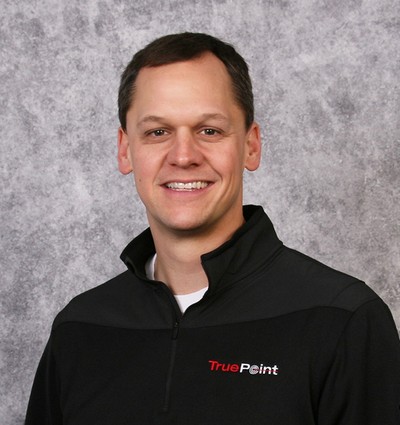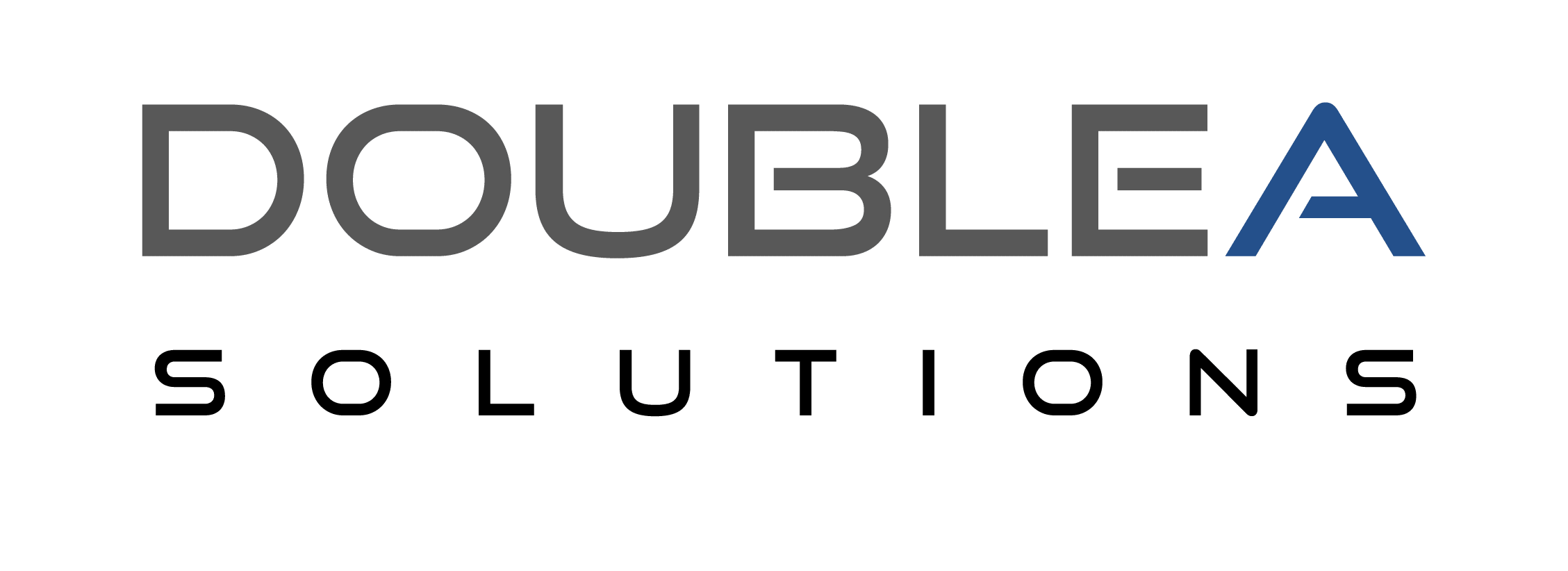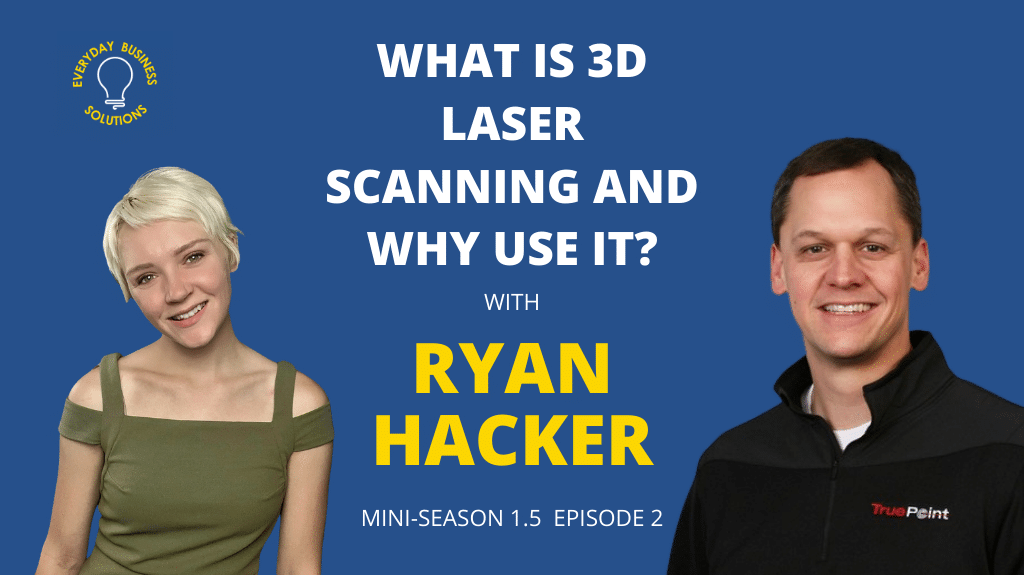In the last episode of Everyday Business Solutions, we dove into who TruePoint Laser Scanning, but what exactly 3D laser scanning is, and why it is so relevant to anybody working out of some kind of brick and mortar office space?
Enjoy Listening To How To Have A Proper Work Life Balance on Everyday Business Solutions?
Click Here To Subscribe On Your Favorite Platform!
About Our Guest:

Ryan Hacker
President - TruePoint Laser Scanning
Ryan Hacker is the President of TruePoint Laser Scanning, a 3D laser scanning company based out of Toledo, Ohio who works to bring accurate measurements and data for buildings, sites, plants, machinery, and industrial space straight to those who need it. They service clients in many industries across the United States.
TruePoint Laser Scanning utilizes the latest technology to collect a full set of data in order to ensure they create any type of deliverables that a client may need now or in the future. Data collection involves contact-less, COVID-19-restriction-friendly methods, and are very-non invasive to day-to-day operations.
Episode Transcript:
Halie Morris 0:31
Hello everyone and welcome to Everyday Business Solutions. And our first Mini Season. My name is Halie Morris. I’m your podcast coordinator and host.
With me, I have brought back Ryan Hacker. We are going to be talking more about TruePoint.
For today’s segment, I really want to go into how 3D laser scanning works and the technology that goes into it. So Ryan, if you don’t mind could you tell us more about that?
Ryan Hacker 0:56
Sure. So one primary method that laser scanning uses is that it sends millions of light pulses per second, which reflect off of objects and return to the scanner sensor.
For each pulse, the distance between the scanner and the object is measured by the elapsed time between the time they’re being sent and received pulses. This is known as the time of flight, or also as we reference last time, LIDAR technology.
There are other types as well, but the premise is all the same, that it’s essentially measuring distance.
So each point of the scan will then be converted to a pixel with a known X, Y, and Z coordinate. Then what we do is we set the scanner up in multiple positions around a site from varying viewpoints. Then at the end, all of the data is registered together into one data set.
So if you think of it like each scan is a piece of a puzzle. When we put the puzzle together, that is actually the registration process of tying them all together and then you see the big picture.
With these millions of data points, we capture and process into what’s called the Point Cloud. It creates a very accurate data set of the structure or the site that we’re scanning.
The other thing we can do is we can take full-color scans. We can actually do 360-degree photos as well, that are dimensionally accurate of the site.
The client would receive not only this Point Cloud, but they can actually have a photorealistic looking image of their site as well, that they’re able to take accurate dimensions and measurements from.
Halie 2:47
Wow, that’s pretty cool. I’m a visual person so I hope everybody else is too and that everyone is just imagining this process is incredible.
Ryan 2:54
Absolutely, it is neat. You should think of a picture. Each pixel in a picture. That’s kind of like a point cloud.
So in other words, as you zoom out, it looks kind of like a photograph, although not quite as clear.
But as you zoom in on each individual measurement that we take, it’s just like a pixel of a photo. So just like when you zoom in on a picture, you see those individual pixels. That’s really what a point cloud looks like.
Halie 3:22
That’s incredible technology! What are some of the benefits of it?
Ryan 3:27
So there’s a ton of benefits of laser scanning again, which is what got me into this industry, to begin with. But, the biggest thing right off the bat is you can have complete as-built documentation of your site.
The technology is very precise and we can collect the data at a very high speed. So, you’re able to do it very quickly. The data is dimensionally accurate, measurable, and shareable data sets that can be sent around to various offices and various people throughout the project. Projects can be turned around very quickly.
The data can be processed within a day or two on normal sized projects. Obviously, larger projects may take a little longer.
They decrease the disruption of the project environment. Laser scanning is a non-contact measurement tool, which means we can set up from a distance and capture the information that we need. This also translates into minimal operational shutdowns.
In other words, a lot of the facilities we’re scanning are in operation while we’re out there scanning, and typically they will not need to shut down or anything of that sort.
It also will eliminate the need for sight revisits because laser scanning indiscriminately captures anything and everything that it can see essentially. Even though today we might not realize we needed this measurement or that measurement, we most likely picked that up in the scan data and so you really do eliminate or minimize sight revisits.
As I talked about a moment ago too, it really is a safe solution for inaccessible or hazardous locations. Again, it goes back to the fact that the scanner doesn’t have to be set up next to something or touching something that could be potentially hazardous or a piece of equipment that’s running things of that sort.
Overall, it just it expedites the project planning and execution process, ultimately overall reduction and change orders, delays, and cost to the project. There’s a lot of other benefits as well, but I would say those are probably the biggest ones.
Halie 5:37
You talked about how quickly it can be done and obviously only having to do one site visit is amazing. How long does a laser scan actually take?
Ryan 5:49
Yeah, first of all, with us having project managers all over the US, we can quickly work to get our clients detailed quotes, as well as mobilized to the sites for our clients.
For most jobs, areas can be scanned in as little as a few hours to larger sites that may take a few days.
Sometimes, we scan entire facilities or campuses, those can take several weeks to capture the entire site, but most projects are measured in hours or days typically.
Halie 6:20
This is some really cool information, as far as the technology that goes into it and the beginning to end process.
For our listeners’ sake, how does this tie back into the Everyday Solutions brand?
Ryan 6:34
So as often is the case with like buildings and plant facilities, existing 2D drawings either don’t actually exist at all or they’re inaccurate and incomplete.
Projects managers recognize that they need accurate as-built data to evaluate their structures and their equipment.
The comprehensive Point Cloud obtained by 3D laser scanning provides a complete digital replica of the facility. That obviously can be used for easy collaboration and communication on their project with all of the stakeholders involved in the process.
Halie 7:13
Thank you, Ryan!
That is going to wrap up our section to the second episode of our mini-season for Everyday Business Solutions.
Again, this is Ryan Hacker, he is the president of TruePoint. So thank you for tuning in. Thank you Ryan for coming on again.
Ryan 7:26
Thanks for having me again. Appreciate it, Halie.

